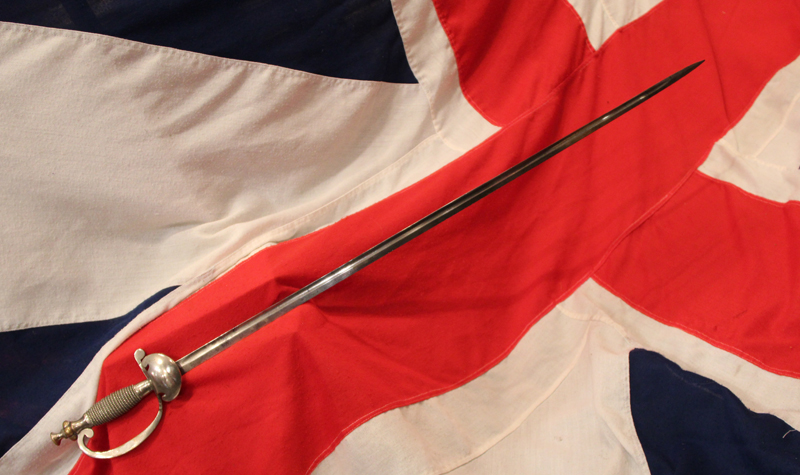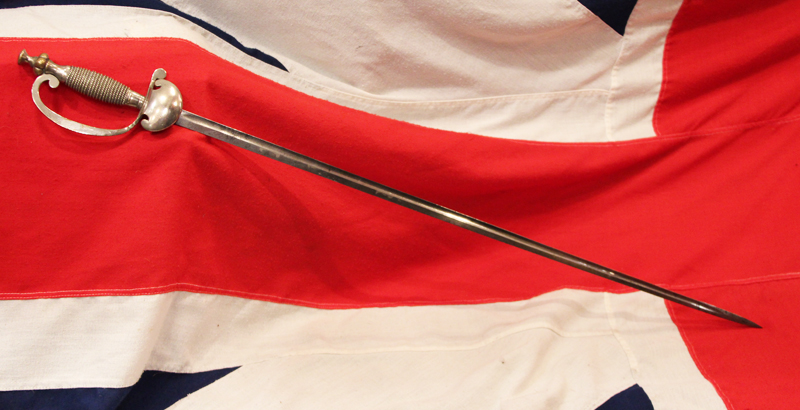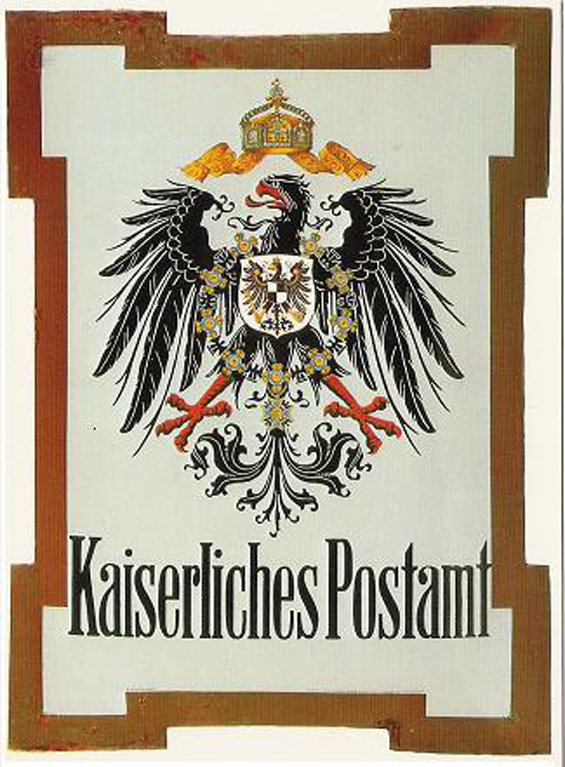A Most Rare Imperial German State's 'Postal Protection Officer's' Sword
Nickel plated hilt, wire grip, plain single shell guard, single edged etched blade. This is a very scarce sword, we have only previously had the Prussian type [with Prussian Eagle Guard] see page 399 John R Angolia 'Swords of Germany 1900/1945'. This has the plain guard for another Imperial State's service, not the Prussian. Blade half etched with fancy scrolls and trumpets drums, stands of arms, cannon etc. Upon the Austro-Prussian War of 1866 and the break-up of the German Confederation in the Peace of Prague, the North German Confederation was established, instigated by the Prussian minister-president Otto von Bismarck. Originally a military alliance, it evolved to a federation with the issuing of a constitution with effect from 1 July 1867. In the course of the war, Prussian troops had occupied the Free City of Frankfurt and the King of Prussia (later to become Emperor of Germany) had purchased the remnants of the Thurn-und-Taxis Post organisation. According to article 48, the federal area of the Northern German states, de facto an enlarged Prussia, came under the united postal authority, led by director Heinrich von Stephan.
With the German unification upon the Franco-Prussian War of 1870?1871, the Deutsche Reichspost was established as a state monopoly and became the official national postal authority of the German Empire including the annexed province of Alsace-Lorraine. Its official name was Kaiserliche Post und Telegraphenverwaltung. The Southern German federated states of Baden (until 1872), W?rttemberg (until 1902) and Bavaria initially maintained separate state post authorities, that nevertheless were integrated into the nationwide administration. On 1 January 1876 a Reichspostamt under Postmaster General von Stephan was split-off from Bismarck's Reich Chancellery as a government agency in its own right. In the First World War, a Reichsabgabe tax was levied on the postal traffic from 1 August 1916 in order to finance the war expenses.
Deutsche Reichspost logo, 1925
With the establishment of the Weimar Republic upon the German Revolution of 1918?1919, the former Reichspostamt in Berlin became the Reichspostministerium. After the hyperinflation period, the Deutsche Reichspost (DRP) agency was again spun off in 1924 and operated as a state-owned enterprise. On 2 June 1932 Paul Freiherr von Eltz-R?benach was appointed Reichspost Minister by Chancellor Franz von Papen and he maintained his office upon the Machtergreifung of the Nazi Party in 1933, "assisted" by Nazi state secretary Wilhelm Ohnesorge. The postal area was significantly enlarged with the incorporation of the Saar territory in 1935, the Austrian Anschluss in 1938, and the annexation of the Sudetenland according to the Munich Agreement. It was during this time that the Reichspost installed the first public videophone.
In the Second World War the Reichspost authority spread out to the Polish areas annexed by Nazi Germany, such as the Reichsgau Wartheland, the Reichsgau Danzig-Westpreu?en, and the Polish General Government. In 1941 postal codes were introduced. The Feldpost military mail organisation of the Wehrmacht not only served Army, Luftwaffe and Kriegsmarine service members, but also SS-Verf?gungstruppen, Waffen-SS and Reichsarbeitsdienst members in the field, becoming the general postal authority of the occupied territories. No scabbard.
Code: 21714
425.00 GBP





